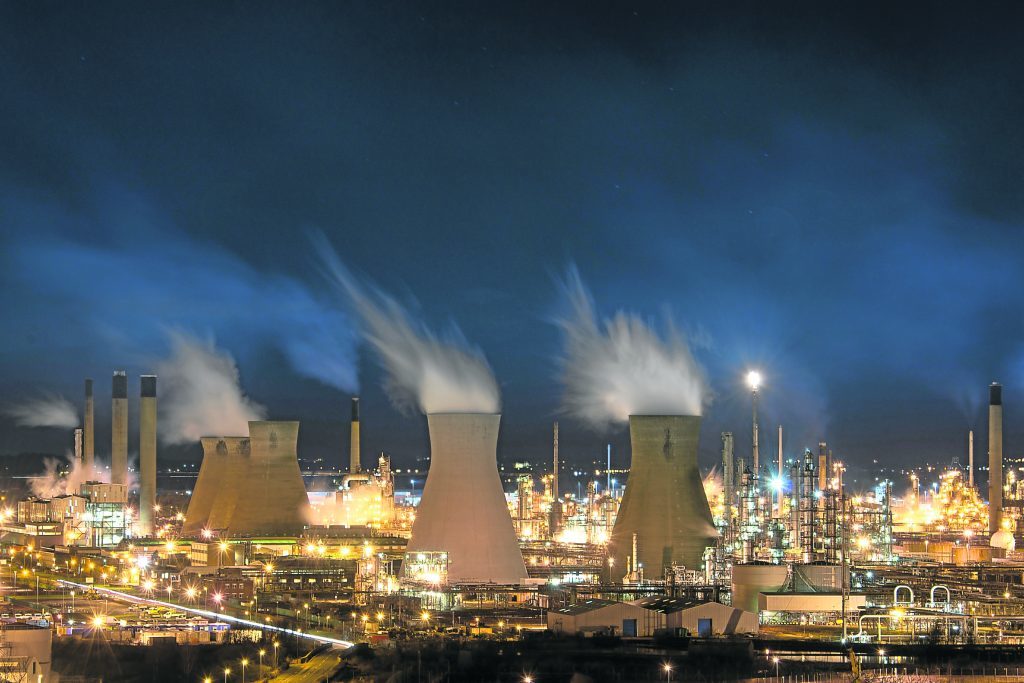
I was chatting recenty to a leading figure in the world of garment manufacturing. The biggest challenge they currently face, he said, was to manage the transition away from synthetic fabrics. “Within a few years,” he declared firmly, “they will be gone”.
For synthetic, read mainly “oil-based”. I was aware of longstanding concerns about the environmental impacts of non-biodegradable clothing but was surprised by the urgency and timescales he was talking about. Given my involvement in pure, natural Harris Tweed, it sounded like good news!
It was also symbolic of a much wider reality with profound implications for our society and its industrial base. After decades of tentative steps and much talk about moving towards a greener economy, the pace of change is now accelerating at a quite dramatic rate.
Given the low starting point, this may not yet be obvious. However, the statistics do not lie, the symptoms are all around us and the trend is only going in one direction.
Maybe an enforced change in fashion habits will do more than grand declarations or international conferences to confirm that message.
Industries like textiles and plastics are under far great pressure than before from a pincer movement of consumer resistance and regulatory pressure. The images of plastic detritus choking marine life in David Attenborough’s Blue Planet series contributed to a climate in which manufacturers with an eye to future reputation are acting before they are forced to act.
Energy generation is in the vanguard of this movement with just about every government in the world committed to moving away from fossil fuels while increasing reliance on renewable technologies. Until now, cost has been the main inhibiting factor but this too is in the process of rapid reappraisal.
For full effect, these trends have to be pursued on a truly global basis. However valiant the efforts of one household or country might be, it was always going to take the full-blooded participation of the great polluting economies of the world – the United States, China, India – before substantial progress can be made.
Ultimately, this was never going to happen on grounds of altruism but self-interest, both economic and as measured through the quality of their own people’s lives. All of that is now kicking in with the result that the biggest culprits in terms of polluting the environment are rapidly becoming world leaders in developing alternatives.
China now has more than a third of the world’s wind power capacity and uses more battery-only electric cars than the rest of the globe put together. Just as important, the sheer scale of its manufacturing capacity has driven down costs of the hardware that goes into green energy projects, particularly solar power.
While the fossil fuel industries are acutely aware of what is going on and are furiously hedging their bets, they are in no imminent danger of going out of business. More than 80 per cent of global energy consumption derives from fossil fuels and they are going to be with us for a long time to come. But that leaves plenty room for a major shift in emphasis within a relatively short timescale.
The tipping point for renewables will be when they can compete with other forms of generation without requiring subsidy. This is a lot closer than seemed possible even a couple of years ago. Indeed, it has happened already in Chile where wind and solar generators have secured major power contracts on an unsubsidised basis.
Closer to home, the Contract for Difference offshore wind auction last September rendered previous assumptions obsolete when Engie’s Moray East project secured CfD with a startlingly low bid. With technology developing and the size of turbines increasing, it is quite plausible to think of offshore wind becoming a fully competitive generation source within a few short years.
For all the indignation which followed the UK Government’s decision to end subsidy for new offshore wind projects, that reality has been assimilated comfortably into the industry’s calculations – and windfarms are still being built. When the same happens with offshore wind, with its far greater potential capacity, that really will be a game-changer in the energy market.
Just a few years ago, electric cars were regarded as being on the green fringes of transport policy. Yet now every government which wishes to be seen as responsible is setting ambitious targets within relatively modest timescales while sales of electric cars are growing at 10 times the rate of the market as a whole.
Even where there is political ambivalence about the process of change – and the climate-related imperatives which drive it – the market is having its say. For example, in
the United States there are now more people employed in solar power than in the coal industry, even though it is the latter which is flexing its political muscle.
There are few certainties as we enter 2018 but one is that the facts and figures available by the year’s end will be even more striking. For those with the keenest awareness of environmental issues, the pace of change will never be fast enough and demands will continue to be made. But the good news is that progress towards a new energy era – driven by the world’s biggest economies – is now unstoppable.
For Scotland, and particularly the north-east, that creates both challenges and opportunities. There is, I’m sure, a widespread if largely unspoken awareness of the contradiction between pinning our hopes on the oil price returning to former glories while at the same time proclaiming our green credentials.
It is an anomaly we need not be embarrassed about. On the contrary, we need to take maximum advantage of our vast experience of the energy industry and associated technologies in order to apply it to the opportunities which are emerging.
We have the businesses, the universities and the people to meet that challenge – just as we have the natural fabrics tailor-made to render synthetic interlopers redundant!
Recommended for you
